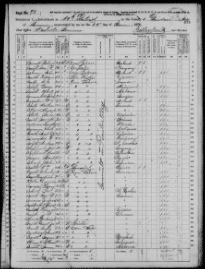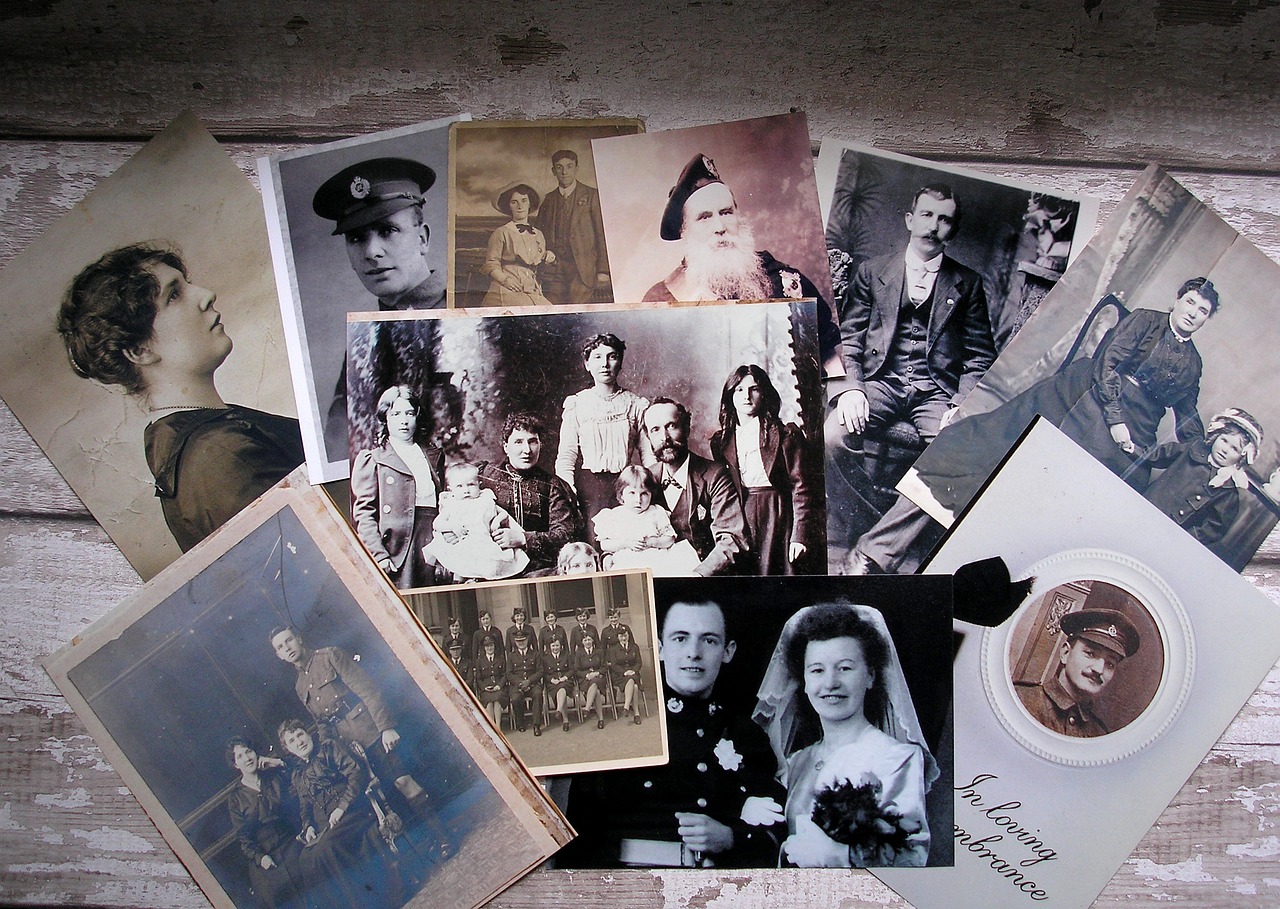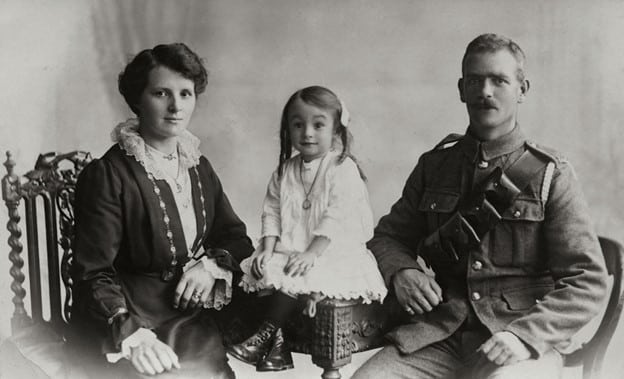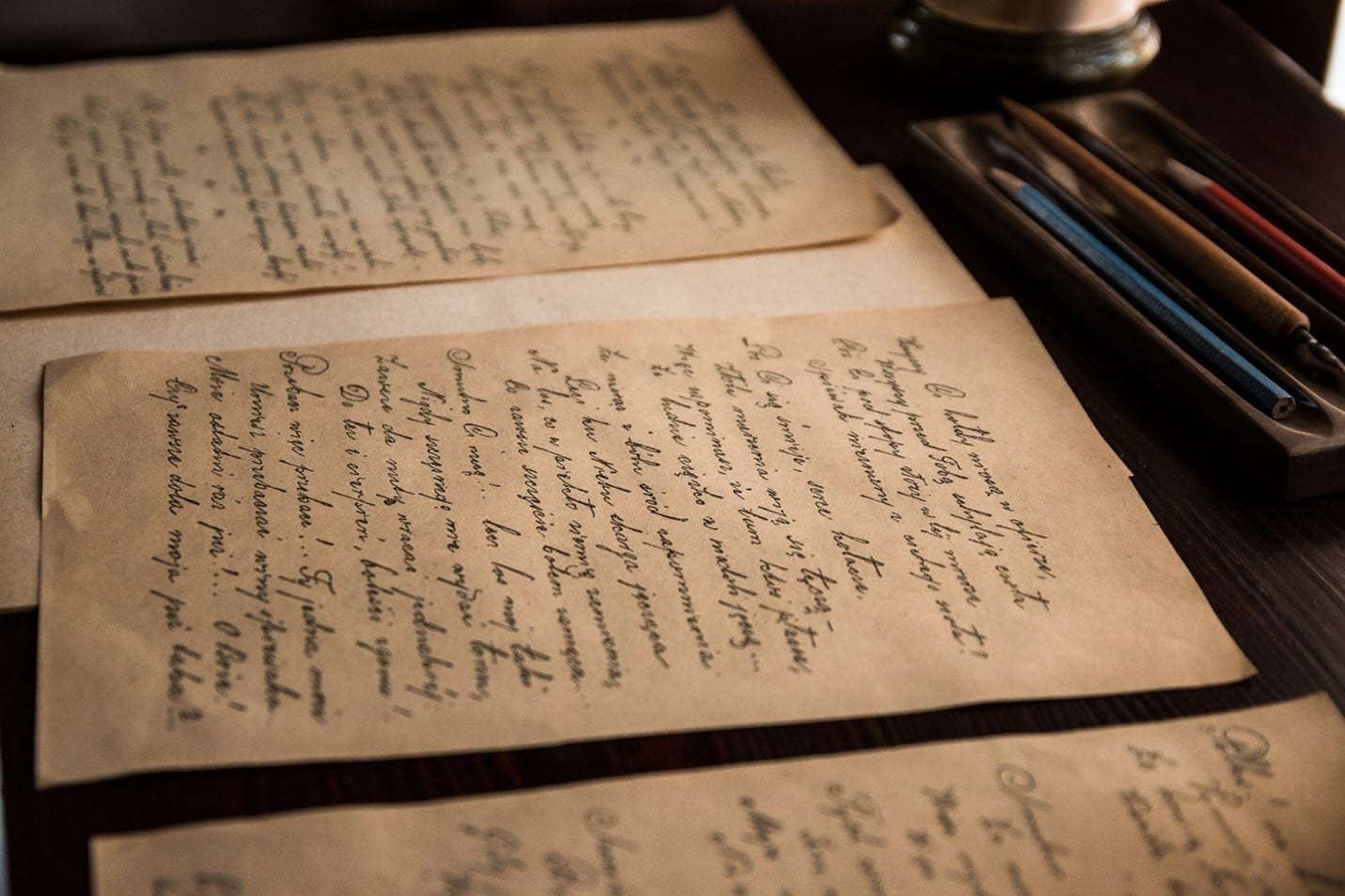
Ancestral Family Name Changes: How to Trace Your Ancestors When Birth Names are Unknown
ANCESTRAL FAMILY NAME CHANGES: HOW TO TRACE YOUR ANCESTORS WHEN BIRTH NAMES ARE UNKNOWN
We’ve probably all heard the sob story: A poor immigrant arrived in Ellis Island after their harrowing journey across the Atlantic. Not understanding the fast-spoken English of the customs officials there, the immigrant tried to give the official their name, but was misunderstood.
Due to an overload of immigrants to process, as well as a lack of patience, the customs official gave up and quickly scribbled down a random last name, just to keep the line moving. And suddenly, the immigrant lost the surname given to them at birth, and was forevermore known under their new American name.
Yes, it’s a sad story. A very sad story. It is also entirely untrue.
Stories of name changes happening at Ellis Island are a very common genealogy myth. The truth is immigrant names were given to the customs officials at Ellis Island by passenger lists that were created in the country of departure. So, customs officials were not actually taking names and writing them down.
In addition, language barriers weren’t really an issue on Ellis Island.
The United States Federal Government employed numerous interpreters on the Island, as well as many bilingual customs officials. This meant that there was generally someone available to translate for any language needed, at any time.

So, if the story of your family’s name being changed at Ellis Island is not true, when did their name change? And why?
Understanding Ancestral Name Changes
Before we can dive too deep into locating family records prior to name changes, we first need to understand why people changed their names.
It turns out the answer to that question is not as black and white as you’d think.
While there are numerous reasons why immigrants changed their last names, here are some of the most common.
Illiteracy
Prior to the twentieth century, uniform spelling of names and words was not really a thing.
People mostly spelled things phonetically. And if they were illiterate, they would generally defer to whatever spelling was used by the person writing down their name.
That meant, if a German immigrant with the last name Bäcker was illiterate, their name may have been recorded as Bakker by the Dutch person creating the ship’s passenger list. Without being able to read and correct the mistake, the official spelling of that immigrant’s name would have been recorded as Bakker.
Assimilation
After arriving in the United States, many immigrants felt the need to change their names in order to fit in more easily.
They didn’t want a name that was hard for others to pronounce, or that made them stand out. So, a lot of immigrants anglicized their names or took on the American translation as their new surname.
For example, François Barbier may have become Frank Barber, or Alessandro Bernardini may have taken on the name Alex Bernard.
Additionally, many Jewish immigrants changed their names to avoid anti-Semitism.
To Get Work

When many families first immigrated to the United States, they faced a great deal of discrimination.
With cities crowded by the sudden influx of newcomers, resources were sparce and housing was limited. Because of this, many immigrants were treated very poorly and had a hard time finding work.
By changing their names to something that sounded more “American,” immigrants had a better chance of being hired for certain positions. They also faced less discrimination while on the job.
To Shorten Their Name
In some countries of origin, it was common, and still is in some cases, to give a person multiple first, middle, and/or last names.
This tended to cause a lot of confusion for immigrants attempting to start their new lives in America.
In an attempt to simplify things, many immigrants dropped parts of their names, or shortened them to make them less complicated. For example, Hans Friedrich Johann Zimmerman may have shortened his name to Fred Zimmer, and Anna Catharina Hendrik Van de Berg may have become Anna Berg.
Difference in Alphabet
When some immigrants arrived in America, they not only had to deal with a new language, but also a whole new alphabet. This proved to be quite a challenge when it came to figuring out how to spell their names.
Take the first name Olga, for example. In the Cyrillic alphabet—used most frequently in Belarusian, Bulgarian, Kazakh, Kyrgyz, Macedonian, Montenegrin, Russian, Serbian, Tajik, Turkmen, Ukrainian, and Uzbek—Olga would be written as Ольга.
When immigrants arrived from countries where the Latin alphabet is not used, they frequently had to adapt to the closest related Americanized spelling and pronunciation of their names.
So, Ольга Ирина Александрова would have become Olga Irina Aleksandrova. And then that may have later been shortened to Olga Alexander.

7 Steps to Finding Your Original Ancestral Name
As you can see, our ancestors had a lot of reasons for changing their names. And those name changes could have taken place at many different points in their lives.
That, of course, makes it a lot more complicated to figure out their original name.
But we all know that complicated does not mean impossible. It just means we have to dig a little deeper and be ready to look in some less-than-obvious places.
Here are seven steps to finding your ancestors’ original names.
1. Ask family members.
This may sound really obvious, but people frequently underestimate just how much information can be gleaned from old family tales.
My family is a perfect example of this very thing.
Ever since I was a little girl, I had heard the story of my great-great-grandparents making their way from Germany to the United States. Each time I was told this particular story, there was a mention of my great-great-grandmother’s name being changed from Margarethe to Augusta when she went through Ellis Island.
However, as I started to learn more about genealogy and look further into my own family history, I realized that the mistake at Ellis Island never actually happened.
Yes, my great-great grandmother’s name did change, but it was actually just shortened from the incredibly long name she was given at birth. Instead of going by Margarethe Justine Augusta, she simply settled on one first name.
And the decision to shorten her name likely happened before she ever set foot on a boat to the United States.
While it turned out that my family stories were not 100% accurate, they at least gave me some clues to help discover my great-great grandmother’s birth name. That, in turn, helped me to trace my family even further back in history.
2. Locate obituaries.
If you are looking for the birth name of a relative who passed away in a known location, try looking through old obituaries in the town newspaper archives or at the local public library.
Frequently, when someone passes away, obituaries will list both the name the person was commonly known by as well as their birth name or other aliases.
3. Check census records.
Census records contain a plethora of valuable information.
By simply knowing where to look, you can find the address where your ancestor lived, whether they owned or rented, names of other members of their household, their occupation, what language they spoke, where they were born, the birthplace of their parents, and more.

If you’re really lucky, you can also find information about name changes.
To do this, just search through census records in the state where your ancestors first settled.
As soon as you are able to locate them, take note of the names used in the census as well as the names of the other people in their household.
Then try to locate them on the previous census, and so on.
To illustrate this, we are going to use our fictional immigrant, Frank Barber, as an example.
Let’s say that Frank Barber’s descendants know that he, along with his wife and two kids, immigrated in 1918 and settled in Pennsylvania. Frank and his family stayed in Pennsylvania for at least 15 years, during which time they added three more children to their family.
In attempt to find out what Frank Barber’s birth name was, his descendants locate the 1930 Pennsylvania census, where they find Frank Barber (age 35), Ellie Barber (age 33), Julie Barber (age 15), Louis Barber (age 13), Gabe Barber (age 10), Vivienne Barber (age 8), and Adam Barber (age 6). They also find that the family owned a home in Philadelphia Ward 17.
Next, Frank’s descendants move back 10 years to the 1920 census for Philadelphia Ward 17. However, they are unable to find Frank Barber anywhere. After digging a little deeper, though, they are able to find a family with a head of the household named Francois Barbier, who matches the age that Frank would have been in 1920 (25). It also lists a wife named Eloise (age 23), and three children: Juliette (age 5), Louis (age 3), and Gabriel (1 month). While the names are not exact matches, it is clear that this is the same family.
Now, Frank Barber’s descendants see that back in 1920, Frank was known by his birth name, Francois Barbier. And they also now know that the ancestral name change happened sometime between 1920 and 1930.
4. Look through court records.
If your ancestral name change happened sometime after 1906, chances are high that you will be able to find some kind of paper trail. That’s because in 1906, a law was passed by Congress that all immigrant name changes had to be documented by the courts.
The new ruling was a direct result of the fact that most immigrants did change their names, and the majority of them did it within five years of their arrival. This led to a lot of confusion, and made it a nightmare to try to track people after their immigration.
By requiring that all name changes be registered, not only could the government track immigration trends more easily, but immigrants no longer faced difficulties in voting or obtaining identification, which frequently happened when their name didn’t match their immigration record.
It also made it a LOT easier for descendants to figure out what their ancestor’s name was prior to the change.
That being said, if your ancestral name change happened prior to 1906, there is still a chance that it could be on some court records. Although there was no law in place at that time, some immigrants still went through the courts to change their names legally.
5. Find your ancestor’s naturalization papers.
If you have an idea of where your immigrant ancestor first settled when they came to this country, finding their naturalization papers can be fairly easy.
Just use the free search feature on familysearch.com, or on a paid genealogy site like Ancestry.com, to input your ancestor’s information. You will be prompted to enter all sorts of information, including their first and last name, year of immigration, year of birth, country of origin, spouse’s name, and other details.
Don’t worry if you don’t know all of their information. Just do the best you can, and keep in mind that you may have to search through quite a few records before you find the right one.
Once you locate the record you are looking for, carefully read the certificate as well as any accompanying documents. Often, those records list other names that the person has used. In addition, there is sometimes a letter attached that explains the name discrepancy.
6. Use DNA results to find extended family members.
If you’ve ever taken a DNA test such as 23 and Me or Ancestry DNA, you probably have DNA matches numbering in the thousands.
It may be obvious where some of those DNA matches fall in your family tree, but others may not be so clear.
Go through your list of matches and find people with similar last names, or names that have the same meaning in a different language.

For example, if your last name is Reilly, but you have a third cousin DNA match named James O’Reilly, chances are that third cousin came from a branch of the tree that kept the original family name.
Likewise, if your last name is White, but you find some distant cousins with the last name Bianco, that could be a clue that your Italian great-grandfather Americanized his name after his arrival.
Take any clues you find and try plugging them into search databases for the area where your ancestors first settled. You may get lucky and find a ship manifest with your great-grandfather listed as Michele Bianco instead of Michael White.
7. Hire a professional genealogist.
If you have tried all the steps above, and are still coming up short, hiring a professional genealogist may be the way to go.
Professional genealogists have been down this road before. And they have a whole arsenal of tools in their tool belts that can help solve the name change mystery.
Let them use their experience and know-how to dig into your family’s past and uncover clues that will lead them to discovering your ancestral name–and possibly even the reason they changed it!
Final Thoughts
Tracing your family lineage comes with its fair share of challenges. And those challenges are made even harder when an ancestral name change took place somewhere along the line.
However, with a bit of research and a great deal of persistence, breaking through those brick walls and discovering your original family name is possible.
And if you’re ever in doubt, or just don’t have the time to put forth all of this effort, consider hiring a professional genealogist to do the heavy lifting for you.
Related Content
- 0 Comment
Subscribe to Newsletter
- How Can SharePoint Be Used To Organize and Disseminate SOPs?
- Planning the Perfect Genealogy Research Trip: A Step-by-Step Guide
- From Silly to Awesome: How Words Change Meaning Over Time
- The Psychology of Font Choice: How Typography Impacts Content Engagement
- How to Distribute SOPs for Maximum Usability








